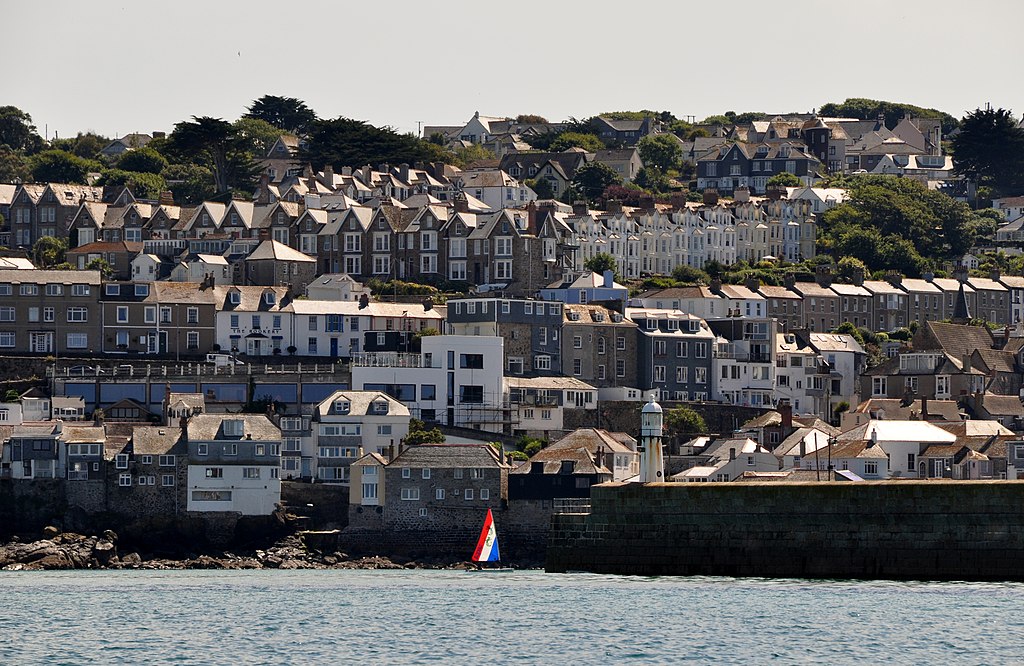
As a young man I took a holiday in the West Country in my van, carrying a small home-built sailing boat, looking for beaches and slipways from which to access the endless ocean. The map showed a slipway in one small town on a beautiful Cornish estuary, so I headed off the main road and zig-zagged down into the town, looking, without success, for a place to park. The car parks were full, and the streets – too narrow to allow parking – were, quite reasonably, painted with double yellow lines. I reached the bottom of the town, where, between the houses, the water glinted invitingly in the sun, while I nosed the car slowly through the streets, poisoning the lungs of sunburned, ice-cream-licking holidaymakers with its exhaust fumes. Eventually the crowd thinned out enough to allow me to emerge and follow another road out of town, up the hill and back onto the main road to resume my search for the sea.
Fifty years on, small coastal towns are still playing host to this frustrating scenario. Tourists walking the picturesque streets are still squeezed and choked by vehicles that have no need to be there. Motorists are still wasting time, fuel, and familial harmony in a desperate attempt to find a place to stop being motorists.
It doesn’t have to be like this.
We have digital technology now: let us use it to the benefit of all.
Take the case of a small seaside town that has only one or two roads leading to it. Traffic flow into the town can be controlled, so that the capacity for vehicles in the town is never exceeded.
First, we take a spot-check of the number of cars and vans in the town early in the morning of one day. This can be done very easily by taking a photograph from a drone. We count the number of cars already in the town, and the number of empty parking spaces in the car parks and on-street parking. Following that initial photograph, we count the number of cars going in and out of town, using electronic sensors deployed on the roads leading to and from the town. As soon as the maximum number of cars that can be accommodated in the town is reached, private cars will be diverted into a parking field, which is served by a courtesy bus to take people to and from the town.
The only vehicles allowed through will be local residents (who will have their own parking spaces) together with commercial delivery, service and emergency vehicles. As and when sensors detect cars leaving the town, new cars arriving will be allowed to enter, maintaining a constant, manageable number of vehicles in the town. Digital communications will enable the numbers to be balanced.
The town will benefit by being relieved of motor traffic wandering fruitlessly up and down the streets. Residents and tourists alike will benefit from the absence of this pointless traffic. Air quality will improve, leading to a reduction in asthma and other lung disease, and also fewer heart attacks, so that the NHS is less overburdened. It will be a quieter and happier community. Less petrol and diesel will be burned, and less CO2 will go up into the atmosphere. The farmer whose field is used as the overflow car park will benefit financially, as will the person who gets to drive the courtesy bus.
Inevitably there will be objections, because any change, no matter how sensible, will always bring out objectors, but the objections will almost certainly subside after a few weeks, as they do with pedestrianisation projects.
It will take time to get the first scheme started, but after the first couple of communities have it running, the idea will spread as people discover the benefits. The idea is not new; already many towns display the number of empty spaces in the multi-storey car parks in the town. Indeed, for all we know, there may be towns in the south-west or further afield which are already implementing this kind of scheme.
Traffic reduction in coastal towns is not going to happen by itself. We need to discuss traffic with friends and neighbours, because it is going to take pressure from local people on parish and town councils to effect change. We need to speak with parish and town councillors, and write to district and county councillors. We need to get together and ask for allotted time to address parish and district council meetings. We can even write to our MPs.
All it requires is that we do not take “No” for an answer. The first response of an elected councillor to any proposition is usually a fob-off. They are pretty busy people, and we are asking them to be even busier for a time. If they dismiss the idea, we must ask them to detail the reason for the dismissal. Study their reasons: are they valid? Sit down with them to discuss the proposal. Hold up to them the carrot of being a pioneer. Show them the stick of their being stuck in the mud.
We can rid our coastal towns and harbours of the unnecessary problem of frustrated drivers, aimlessly wandering our streets looking for a non-existent parking place in which to free themselves from their cars for a few hours. All it takes is a few letters to our local democratic representatives.
Let’s do it.





